Madrid and Barcelona are the two first cities tourists usually want to visit when planning a trip to Spain. The first is the kingdom’s capital and the second is the most famous city in the autonomous province of Catalonia. Yet, if you are a history buff with a special liking for culture, tradition and the charm of quaint old towns with mouth-watering gastronomy, then you are missing out on the beauty of Navarre and Aragon.
We have put together a journey starting in the town of Pamplona all the way to Zaragoza, where you will immerse yourself in the culture and history of these regions. See why Navarre and Aragon must be a part of your trip to Spain!
Navarre and Aragon: Two hidden treasures in the border of the Pyrenees
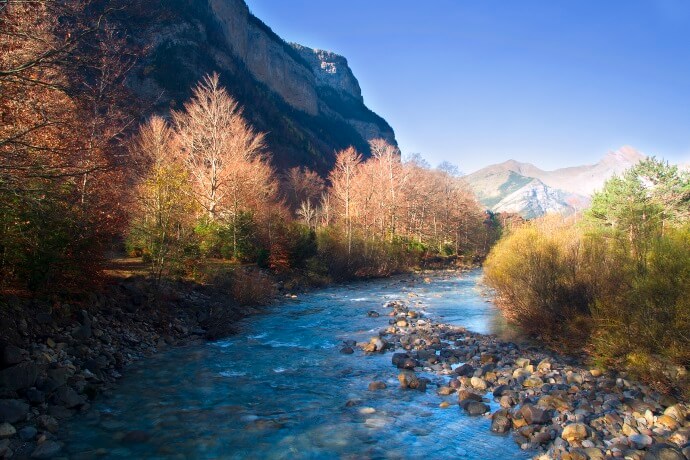
Hidden in between Madrid and Catalonia, are the autonomous communities of Navarre and Aragon. Sharing their borders with the hypnotizing Pyrenees, these two Spanish regions present a strong historic-artistic heritage capable of marvelling at anyone who visits it.
Navarre is a geographically diverse region in the North of Spain that was once an old Basque mediaeval kingdom composed of many villages and the capital, Pamplona. This region borders the French Pyrenees and the autonomous community of Aragon. It further holds the status of comunidade foral, a special, self-governing regime. Navarre is popular for pilgrimages, the witch covens and religious festivals. From the white, fluffy Winter snow, to the green thaws in the Spring, this autonomous community offers a wide selection of attractions all year round!
Aragón brings together the green of the mountains and forests with the light brown of the stone-built houses and monuments that make it a historical site worth visiting. In this region, also known as the birthplace of the famous painter Goya, you can find the large city of Zaragoza, a capital with a strong Moorish and Roman architectural influence. Here you can visit UNESCO World Heritage sites and the known pilgrim route, the Way of St James.
To grasp the beauty and value of Navarre and Aragon, we shall start our journey through some of the most hidden treasures of Northern Spain!
The first stop: Pamplona

Located right in between Aragon and the Basque country, Pamplona is the capital of Navarre, a historic city full of tradition and history. This town is believed to have been founded in 75 BC during the rule of the infamous Roman Emperor, Julius Caesar. During this time, Pamplona, also known as Pompeiopolis or Pompaelo, served as a military settlement. After the Moorish and Frankish invasions, the city was recognized as the capital of the kingdom of Navarre during the reign of King Sancho III.
Over the years, Pamplona has become known for its ancient crafts of sandals, wineskin, rope, and pottery making, but also for the San Fermin Bullfighting Festival that takes place every July. This is a week-long festival where bulls take the streets every morning in a defined route from Santo Domingo Street to the Old Town streets!
Apart from its historical heritage, Pamplona is also considered one of the greenest cities in Spain, with parks, such as Riverside Park and Yamaguchi Park as a mandatory stop in your visit to Pamplona. These are peaceful and naturally beautiful sites to enjoy an end-of-day walk.
While visiting, you should get to know the Santa Maria de Pamplona Cathedral, the San Saturnino’s Church (a usual stop for pilgrims on their way to Santiago de Compostela), the church of San Lorenzo and the Plaza de Toros (bullring).
Olite
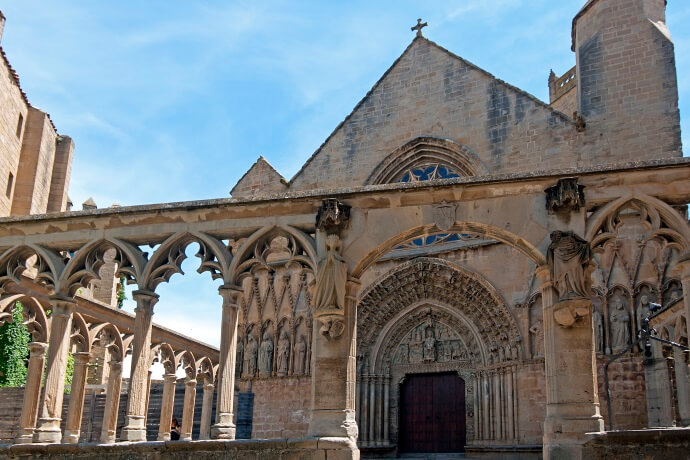
To visit Olite is to travel back into the Roman ruling times and the Middle Ages, where stone-built houses colour the streets in a honey glaze. This town is imbued with historic sites capable of fascinating anyone, especially the Castillo de Olite (Olite Royal Palace), part of the city’s landscape. In the 15th century, King Carlos III, even governed from here.
When visiting Olite, you are in the right place to admire Gothic and mediaeval architecture up close, which is spread around the city in the traditional stone houses, churches and arcades. One of the stops you have to make is at the Church of Santa María la Real. This religious monument displays Gothic features with abundant decorations that can be seen, for example, on its outstanding doorway.
Apart from the historical sites, you can equally indulge in locally-produced rosé and red wine (a growing production in the region), and even venture into wine routes and wine-tasting experiences! You can have an even more immersive experience by staying in a parador, a hotel restored from old constructions, like castles, palaces, monasteries, and even fortresses!
Sos del Rey Católico
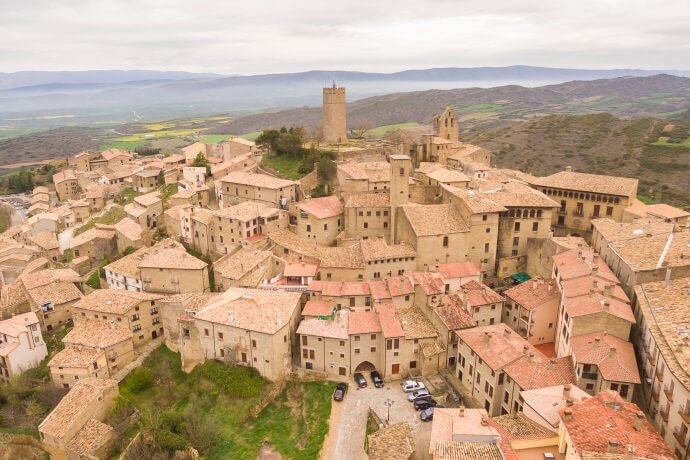
This is a mountain village in the region of Aragon, located around 120km from the capital, Zaragoza, and 60km away from Olite. Sos del Rey Católico is a mediaeval historical gem that will marvel you with its proximity to the mountains and caramel-coloured landscape of traditional houses dating back as far as the 12th century.
In this village, you can enjoy a relaxing trip immersed in the history and culture of Aragon. The Palacio de Sada (birthplace of King Ferdinand II of Aragon) and the Jewish quarter (part of the town where Jewish people settled after being expelled by the Catholic monarchs) are some of the sites you must see when in Sos del Rey Católico. You must also visit the Romanesque church Iglesia de San Esteban. Inside, you can admire the details in the proto-Gothic frescoes in the crypt.
Burguete
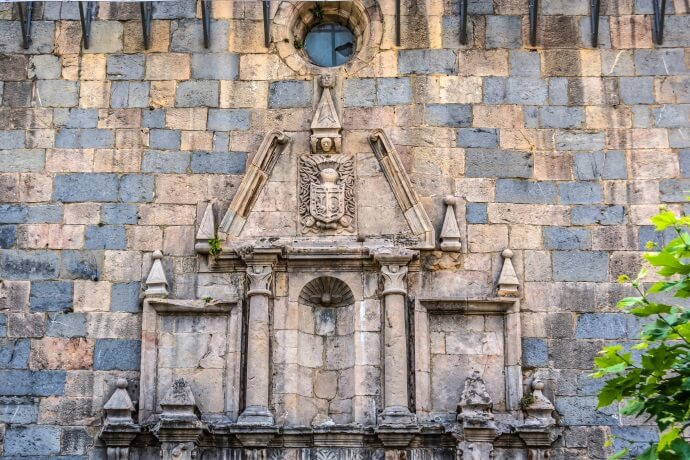
Burguete is a small town located right on the border with the Pyrenees, or as described by the famous author Ernest Hemingway, “the wildest territory in the Pyrenees”. This city is part of the autonomous community of Navarre that lies between two mountain streams that form the headwaters of the Urobi River.
While visiting Burguete, you will be surrounded by the peaceful meadows and mountains of the region that will enchant you with their natural beauty. To make the most out of the natural assets of this town, you must visit the Mirador de Zamariain, a viewpoint with a spectacular view over the Irati Forest.
This town is also symbolic of its appearance on the Way of Saint James to tend to the pilgrims that found Europe through the lands of the Pyrenees. In this sense, the Church of St. Nicholas of Bari declared World Heritage Site, is a symbolic stop on pilgrims’ way to Santiago de Compostela. This church is the only parish church in the whole municipality of Burguete. For this reason, locals call it the “Parish Church of Burguete”.
Huesca
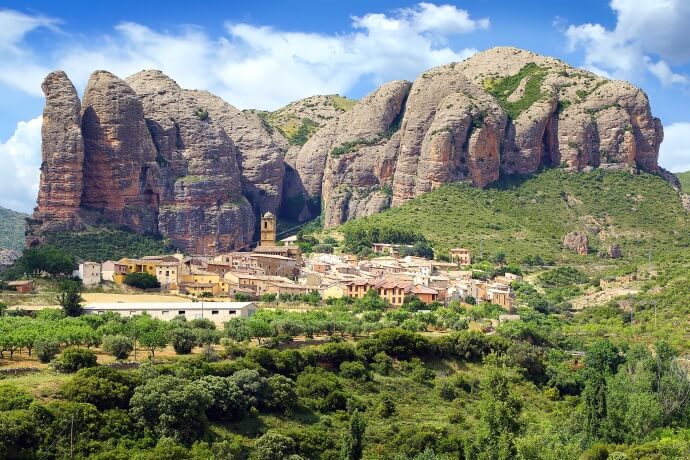
Characterized by a rich cultural and natural heritage, Huesca is a province in the region of Aragon that has been attracting a growing number of tourists over the years. It first originated as “Lleosca”, the capital of an ancient Iberian tribe. Since then, it has been over the hands of the Visigoths and the Moors, but also Peter I of Aragon in 1096. Until 1118, Huesca was the capital of Aragon.
In Huesca, you can go out for outdoor activities like canyoning in the known Cañones de Guara Natural Park or visit the breathtaking rock formation in Aguero, a small town in the province of Huesca. The Mallos de Aguero is a large dolomite structure that attracts climbers from all over Spain and the world.
If you are looking for historical monuments, you have to visit the Huesca Cathedral, built between the XIII and XVI centuries. This cathedral displays a strong Gothic influence with representations of the apostles.
Huesca is also known for the San Lorenzo Fiestas, a celebration of the city’s patron saint. These happen in August and comprise 9 days of different activities, such as music, folk and traditional dances, concerts, religious events, bullfights, and more!
Aínsa
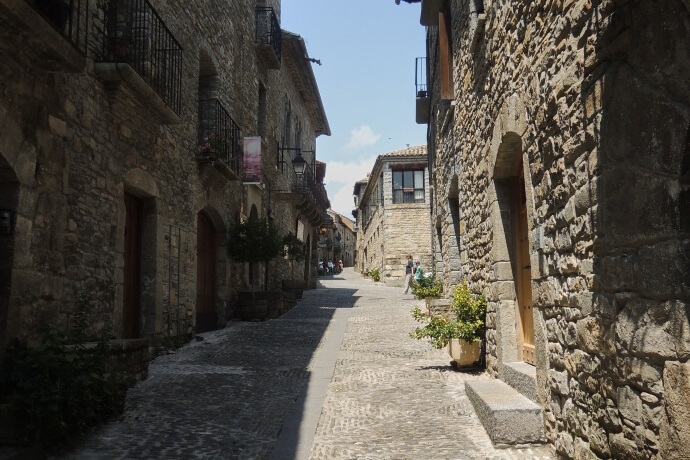
Located in the province of Huesca and the Pyrenees, Aínsa is a town that combines both the old and the modern. It has a well-preserved old town with mediaeval architecture that can be seen in the collegiate Church of Santa María and the cobbled streets. Still in this part of Aínsa, declared a Historic-Artistic site, you can visit the castle grounds and the Museo de Oficios y Artes Tradicionales (Museum of Traditional Crafts and Arts) that will give you a good grasp of this town’s history and culture.
Tourists are allured to Aínsa also for its gastronomy. In this city in the Huesca province, you can try the traditional venison or beef sirloin, stuffed lamb tripe, snails, and the traditional migas (a dish made from fried breadcrumbs). One of the restaurants with an obligatory stop is the Bodegón de Mallacán, an 11th-century house with a view of the main square.
Albarracín
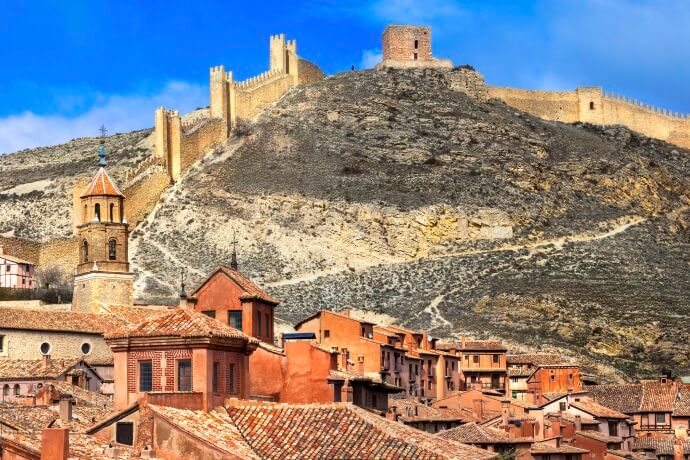
Albarracín is considered one of the prettiest villages in Aragon and Spain, but also a hidden treasure often dismissed by tourists. With a characteristic wall that runs all the way up the hill and overlooks the small hamlet hidden in the green valley, you can expect tranquillity and communion with nature and your surroundings, which is also timeless. Alike the other towns in the Aragon and Navarre regions, Albarracín displays a long historical background and heritage that dates back to the Iron Age (1200 A.C.), when it is believed to have first been inhabited by the Celtic tribe, Lobetani.
When visiting, you must start with the Albarracín Cathedral, one of the most iconic monuments in the village. This cathedral was built between the years of 1572 and 1600 with Gothic influences and a chapel (Virgin del Pilar) later redecorated in Baroque style. You can also include in your itinerary a trip to the Toy and Diocesan Museums to learn more about the history of toys and see an impressive collection of religious art.
For an immersive experience into the Roman era history, you can venture into seeing the 18km aqueduct that goes from Albarracín to Cella and other well-preserved traces of this Empire.
Daroca
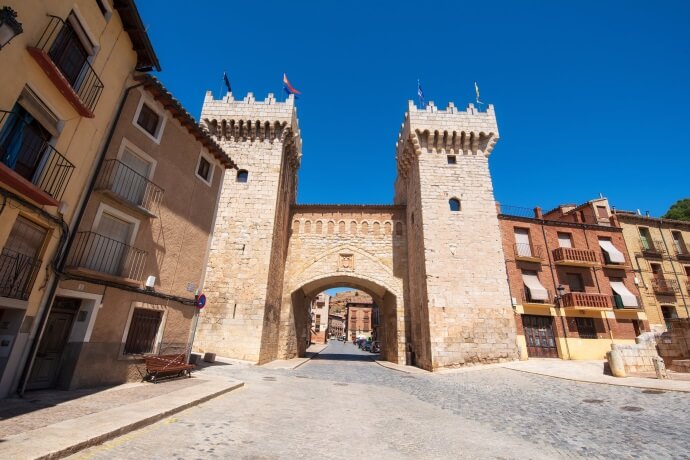
Going further south into the Aragon region, you can find Daroca, a town known for its mediaeval heritage and fair that takes over in late July. The historical town centre is enclosed in the 14th-century, three-and-a-half-kilometre-long city walls. High on one of the town’s corners, you can glance at the ruins of the mediaeval castle.
To get a better grasp of the city’s architecture, you can visit the Romanesque churches and Mudejar building from the days when Daroca acted as an Islamic fortress and a Christian stronghold in the wars against Castile. If you are looking for Baroque and Renaissance-style architecture, you should visit Barrio de la Morería, a former 16th and 17th-century Muslim neighbourhood.
Alcañiz

Alcañiz is one of the main cities of the Kingdom of Aragon, sitting on the edges of the river Guadalupe. This city displays a fascinating historic-artistic heritage, present in the Plaza de España, a conglomerate of mediaeval buildings, including the City Hall and the Exchange. Adding to these sites, the collegiate church of Santa María la Mayor stands out for its Baroque features and Mudejar influences.
The long pork sausages, partridge brine and the “breasts of Santa Águeda” are some of the most famous gastronomical treasures of this city that you must try! Alcañiz is equally known for being the “route of the tambour” due to the Holy Week celebrations, where drums take over the streets.
Final stop: Zaragoza
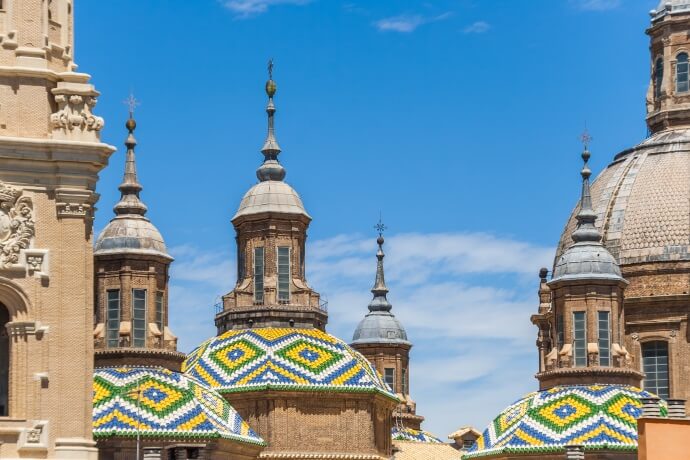
We reach the end of our journey in Zaragoza. Despite being the fifth largest city in Spain, Zaragoza is, unfortunately, not part of most tourists’ itineraries.
As the capital of Aragon, this city displays a strong historical heritage, mostly present in its mesmerizing architecture representing over 2 millennia of history. Founded in the 5th century BC as an Iberian settlement on the banks of the river Ebro, Zaragoza has gone through the dominion of the Romans, Goths, Moors, Aragonese, and Catholic monarchs. Some of the iconic historical sites from this diverse background are the Old Roman Forum, the Baroque Basílica de Nuestra Señora del Pilar and the picturesque old town, known as Casco Antiguo. Each of these monuments is an obligatory stop when passing through Zaragoza.
Alongside the historical sites, you can indulge in traditional Spanish gastronomy in the local tapas bars and restaurants where you can try the Aragonese cured ham from Teruel and pork loin sausage. Zaragoza is known for being one of the cities with the best tapas and nightlife scenes in Spain. So, if there is one place to try traditional tapas, it is here!
Ready to explore Navarre and Aragon?



